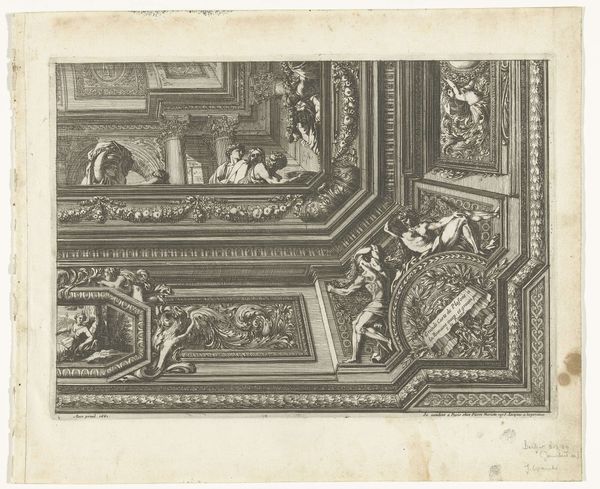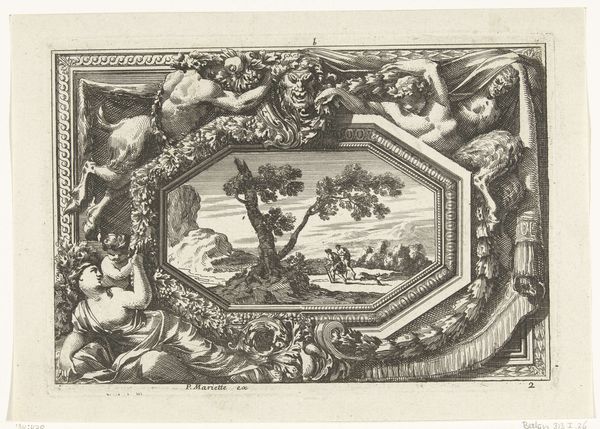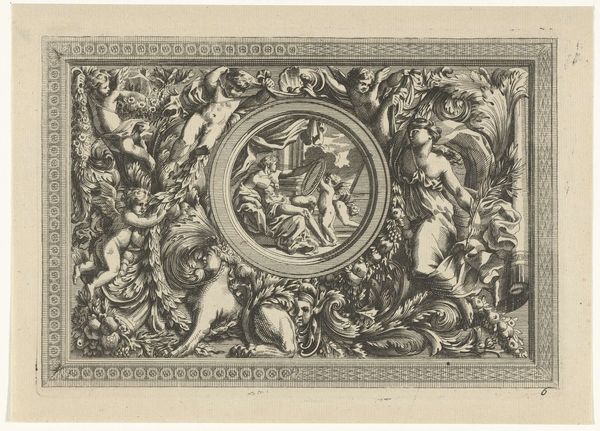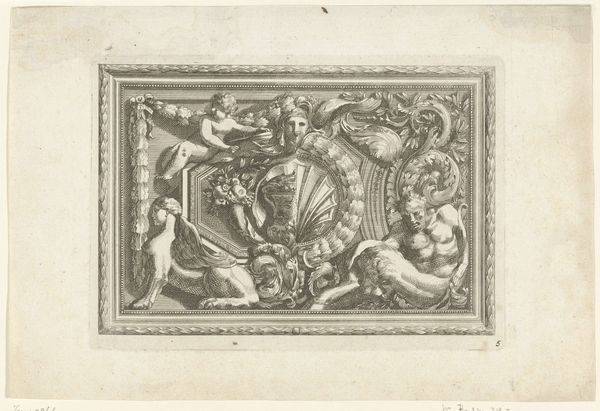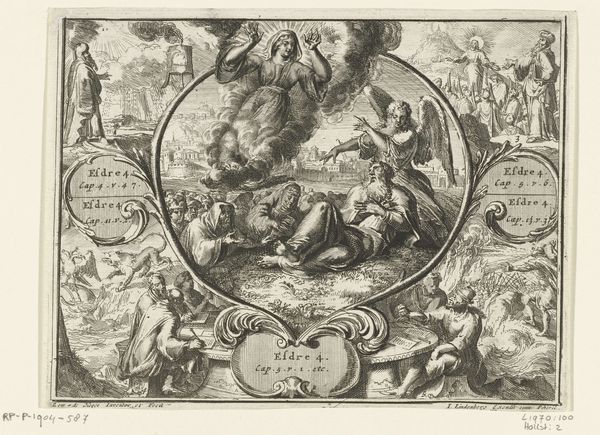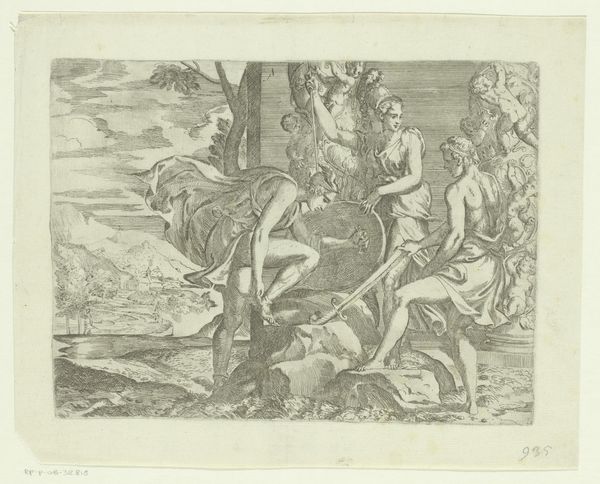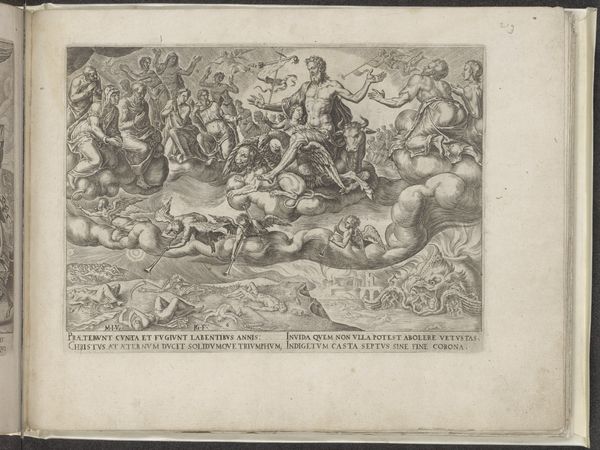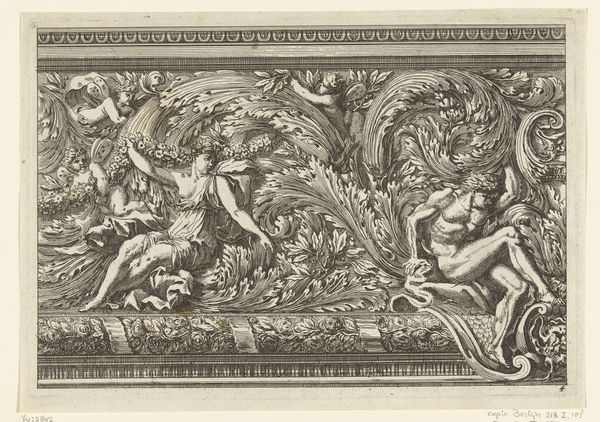
print, engraving
#
allegory
#
baroque
# print
#
figuration
#
line
#
history-painting
#
engraving
Dimensions: height 224 mm, width 310 mm
Copyright: Rijks Museum: Open Domain
Curator: Looking at this intricate print, I immediately think of theatricality—almost like peering into a grand stage set. Editor: That's a great observation! This is "Plafond met cartouche in vorm van wandtapijt" or "Ceiling with cartouche in the shape of tapestry," created in 1661 by Jean Lepautre. It's currently held in the Rijksmuseum and showcases a fascinating intersection of engraving techniques, allegory, and Baroque style. Curator: The texture is striking, even from a distance. There's such a contrast between the density of the figures and ornaments and the relative blankness of other areas. I am curious to examine how those engraved lines impact how this piece works with light and shadow. Editor: It's all about the power structures of the Baroque period. Consider the allegorical figures: The tapestry presents itself as the boundary, demarcating the real from the abstract, the power dynamics in gender and mythology; what's truly "framed" by its creation. Curator: Framed is indeed an appropriate choice of words here. We can also discuss Lepautre's status as designer and engraver. Prints like these were produced and distributed for the design of other objects or architectural features and offer interesting perspectives on the status of "originality." The visual and the functional comingle in such artworks. Editor: Absolutely. The engraving material itself offered unique constraints to be addressed. Lepautre needed a cost-effective and speedy way to influence French artistic expression. This reproductive method democratized Baroque aesthetics and created a vernacular artistic movement throughout society. Curator: But consider how those choices affect accessibility. This ornate style catered to elite taste while paradoxically circulating amongst various craftspeople and their clients, almost disseminating cultural capital. Whose voices are truly elevated or repressed? Editor: A crucial consideration of historical consumption. Thank you for highlighting the socio-economic conditions inherent in this artistic work. Curator: Thank you for taking a moment to consider the cultural weight in this historical work, the relationship between artist and material, original, and copy. Editor: It certainly reveals the complex production of Baroque ideals. It makes one wonder if what appears to be a decorative ceiling detail instead mirrors how we frame culture through material engagement.
Comments
No comments
Be the first to comment and join the conversation on the ultimate creative platform.


